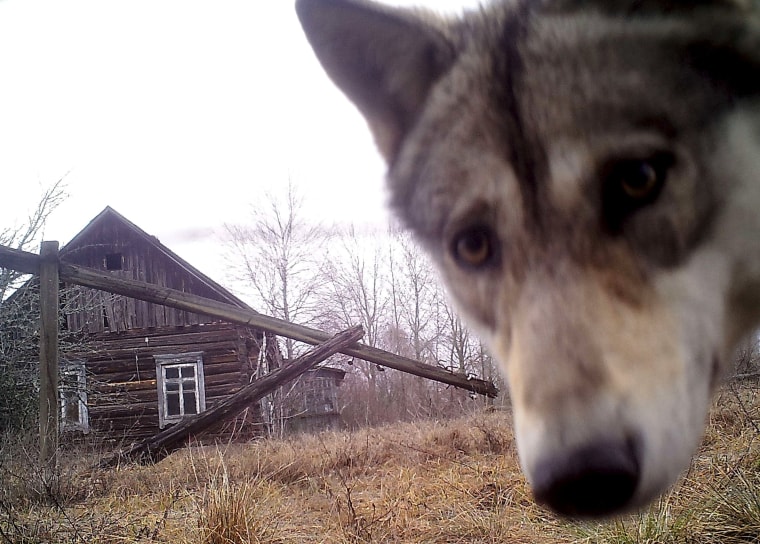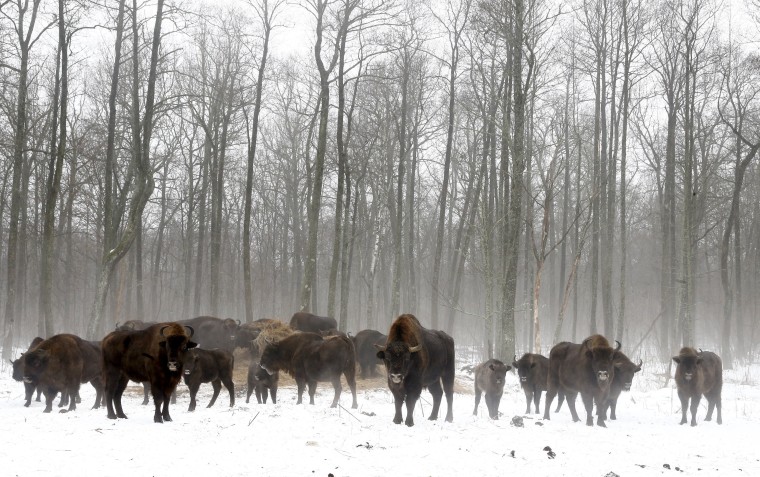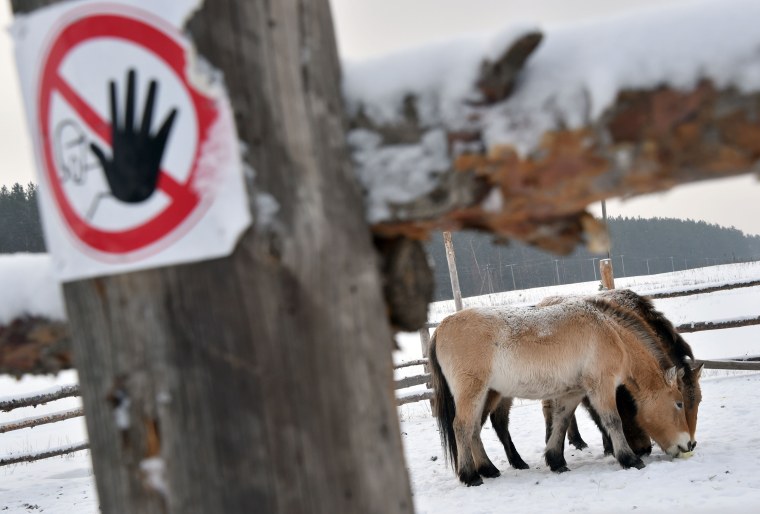CHERNOBYL, Ukraine — The forests and fields near the abandoned site of the world's worst nuclear power plant disaster teem with animal life, proving that in some cases humans pose a bigger threat to animals than radiation.
The Chernobyl nuclear reactor blew up 30 years ago on Tuesday, sending a radioactive cloud over much of Europe and prompting the resettlement of 350,000 people from the area around the plant.
"Peace in absence of cars and tractors and an untouched forage base lets animals thrive," according to Yury Bondar, who supervises biological research in neighboring Belarus' Polesie State Radioecological Reserve, which was created following the 1986 disaster.

The population of wolves, elks and boars in the 19-mile-wide Chernobyl Exclusion Zone compares to those in official wildlife reserves across Ukraine, according to a 2015 study published in the scientific magazine Current Biology.
The wolf population is actually seven times bigger than in Ukraine’s official nature reserves, which indicates that the predators have plenty to feed on,said the study's coauthor Jim Beasley of the University of the Georgia's Savannah River Ecology Laboratory.
Some European bison, blissfully unaware of national borders after having been reintroduced in neighboring Belarus after a century of extinction in the wild, have also crossed into Ukraine.

And the bison have nothing on the Przewalski's horse.
Once spanning the Central Asian steppes, this subspecies of wild horse also went extinct in the wild until several were released in Chernobyl as a conservation experiment in the early 1990s. Now dozens of the animals roam the exclusion zone, thousands of miles from their native Mongolia.
Still, the areas that are now home to bison, wolf, wild horse and scores of other creatures will not be fit for human habitation for several millennia, experts say.
Total Chernobyl casualty figures remain a subject of fierce dispute, due to both deferred health impact of irradiation — cancer usually sets in slowly — but the impact of the disaster is indisputable.

A conservative estimate by the World Health Organization from 2005 is that 4,000 people died due to long-term impact of Chernobyl, in addition to 31 dead in the immediate aftermath. The Chernobyl Union of Ukraine — a group created by and for disaster victims — lists 845,000 deaths on its website.
According to a Greenpeace study published earlier this month, thyroid cancer levels rose by between 3.4 and 100 times in contaminated areas.
Related: Take a Tour Through Chernobyl's Nuclear Wasteland
What about the impact on the animals? Scientists just aren't sure.
"Some effects on individual animals have been reported, but I have not seen any,” said Beasley, who has conducted extensive field studies in Chernobyl. “On the surface a wolf from Chernobyl looks just like a wolf from outside it.”
That doesn't mean the animals aren't being hurt, only that scientists can't tell exactly how and how much.
“There is no escaping the ionization of your cells,” Bondar said. “But we lack studies and equipment to examine it properly.”
He added: “In 15 to 20 years, they may reach a threshold beyond which [genetic] change begins to occur. But that is a question for the future.”
What is clear now is that while radiation hurts humans and animals alike, the removal of human activity outweighs the introduction of cesium, plutonium and americium into the environment.
“Removal of humans definitely did good for [animal] populations,” Bondar added.